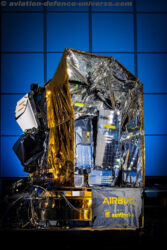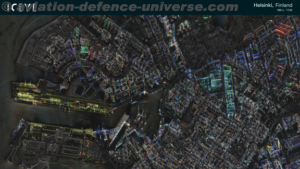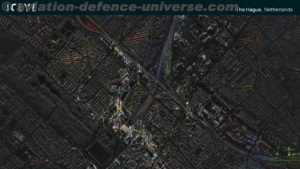It’s a phenomenon that’s gripped millions of smartphone users around the world. Although it’s seemingly innocuous, it’s been responsible for numerous accidents, street brawls and even murders in some global territories. What is it? It’s Pokémon Go, an augmented reality (AR) smartphone game in which players must capture a host of fictitious, animated characters that pop up in real-life environments.
Many experts believe that Pokémon Go, which has attracted a player base demographic ranging from young children up to full-grown adults, marks the tipping point for consumer adoption of AR. But although Pokémon may have pushed AR into the mainstream since it launched earlier this year, the technology is far from new. Indeed its roots can be traced all the way back to the 1940s.
So how has AR evolved in those intervening years and what are the latest developments and applications that are likely to emerge in the coming years?
AR evolution
The term ‘augmented reality’ – which essentially means the seamless merger of real world views with digital elements – was termed in the 1990s, some 50 years after its creation. Early uses involved head up displays in military aircraft that initially centred around gyro gunsights for night battles. The technology was eventually adopted by the civil aviation industry for general piloting purposes and in particular landing approaches.
In the 1970s and 80s, attempts were made to build immersive systems or wearable computers, but the development of these solutions was slowed for a number of different factors, including the size and cost of the equipment.
However, today no such problems exist thanks to the increasing affordability and ubiquity of smartphones and tablet computers that have allowed AR applications to become an ever greater part of our everyday lives.
An AR system essentially depends on four key elements: a user, a physical environment, a display and some digital information relevant to the environment. Typically, its use involves taking live video and then blending new information into it – as is the case with Pokémon Go.
While consumer-facing applications are only just starting to gain traction, forward-thinking companies like Thales have been beavering away behind the scenes for decades, developing solutions for clients across a wide range of industry sectors. One such solution is Thales Eye. Repairing technical equipment is a major issue for companies as it usually entails sending a specially trained expert to the site where the equipment is housed, which costs time and money. So Thales hit on an idea: why not send a local technician to the site and then using AR, guide him through the repair process? That’s exactly what Thales Eye – collaboration between Thales Services and Thales Germany – does.
Thales Eye works by dispatching a local technician to the piece of equipment that needs repairing. They are then – through the use of an AR headset or tablet computer – connected to an expert who is also equipped with a tablet. Even though the expert is located remotely, they can see exactly the same thing that the technician sees and they can then vocally guide the operator through the repair. This service is still at the prototype phase, but the company thinks that Thales Eye has the potential to be groundbreaking.
“We are clearly taking a service-oriented approach, with the goal being to improve to a maximum the comfort and simplicity of the user experience, and this across all domains,” says Dr Amine Arezki, product line manager at Thales Germany.
Augmented solutions
One industry domain in which AR technology developed by Thales has already had a major influence is aviation. The company has supplied its TopOwl and Scorpion AR helmets to military helicopter and fighter pilots for more than 20 years, but up until now the only AR assistance civil pilots had access to was the head up display system on the aircraft’s windshield. That’s why Thales has developed TopMax – a head worn device designed specifically to meet the demands of civil aviation that displays information according to the pilot’s head movements and provides vital assistance during take-off and landings. TopMax has proven to be such a hit with pilots that Thales is already exploring how it might also be used for air traffic management or the control of trains.
Another area where AR has really made its mark is in the marketing field. In the Netherlands, Thales’ sales and marketing teams in Above Water Systems wanted to come up with a marketing tool targeted at clients in the naval sector that reflected the company’s progressive technological outlook while promoting and explaining some of the complex technologies and service concepts that Thales offers. The solution to this conundrum was an AR tablet application called the Thales Naval App (www.thalesgroup.com/nl/app).
When the camera lens of a tablet fitted with the app is pointed at a specific recognisable marker – a digital 3D representation of the Thales solution appears on the device’s screen, as it would appear in the real world. A marker that looks like seawater can be printed on a brochure, leaflet or business card, for example.
“It stimulates the audiences to keep the printed media for a longer time than they would normally because the marker is their access to a new and interesting way to see the world of our naval mission solutions,” says Jeroen van der Wel, innovation manager for Thales in the Netherlands.
Since the app launched it’s been a tremendous success and provided a valuable analytical insight, according to van der Wel, who says that more than 3,000 users have downloaded the app on iPads and Android tablets in 74 countries worldwide. It is expected to reach even more users when a smartphone version is released.
“The first time people download the app, they use it for approximately 10 to 20 minutes, but more than 50% have accessed it more than five times,” says van der Wel. “We also know that it has been adopted by different layers in customer organisations, from operational departments to maintenance and asset management. It is also being used by Thales as a recruitment tool at exhibitions to demonstrate the company’s innovation.” He adds that the app, which has also been used by Thales in the UK to great success, will continue to evolve with Thales Underwater Systems currently developing additional functionality that will allow it to offer more ‘hero’ products and services to customers.
“This makes the app even more interesting for them and it motivates our sales to keep using the app as in introduction tool or to leave the markers behind for a nice ‘after meeting experience’,” says van der Wel.
But all of these uses are just the tip of the iceberg when it comes to the future development of AR technology. Thales is already exploring the benefits of using AR to provide simulations and training applications – particularly for military organisations – and Thales Visionix is developing ‘ruggedised, miniaturized solutions’ for Special Forces soldiers that will see AR technology embedded into ground helmets with radio connection and small computers worn on a vest. The company is also investigating how AR can further aid performance in a number of different industry areas, including the medical sector.
Those developments are not without their challenges. Experts felt that some of the early AR applications created information overload and hindered rather than aided users. There are also potential privacy issues surrounding the use of AR technology in the public and private arena.
But none of these issues are insurmountable and with the rapid development and increasing affordability of new wearable tech, the potential future uses of AR will make Pokémon Go look like child’s play.
Case study: Thales Visionix
Based in Massachusetts, the motion tracking team at Thales Visionix has been working on AR projects since the company was founded in 1996.
Over the years, the team has dreamed up a wide range of different products, including green screen camera tracking for the movie industry all the way through to cutting edge AR solutions for fighter pilots. Despite such successes, Tom Calloway, R&D manager at Thales Visionix, admits that the rapid changes and advances in motion tracking and AR technology present significant problems for his team.
“Our big challenge at the moment is to take it outside of controlled environments, to unplug and untether systems and have them operate in the natural world, including at night,” he explains.
On the flipside, he notes that greater computing power is helping to offset some of these issues.
“Our next major market will almost certainly be ground helmets for soldiers, which will give them vital information about their environment and – as just one example – help them to identify friends and enemies via specific colours and symbols,” says Calloway. “The consumer market probably won’t be ready for widespread adoption of wearable AR for another ten years or so, but have no doubt, we will all be reliant on augmented reality in the future.”
Future uses of AR
Product development – As 3D digital modelling becomes increasingly prevalent in the creation of new products, it’s anticipated that there will be a greater use of AR or VR (virtual reality) at the end of the production chain.
Mixed reality – At the moment AR and VR are two separate entities (VR is focused around a virtual world), but in the future, some experts expect to see the two come together to create ‘mixed’ or ‘hybrid’ realities, with virtual products placed in a real world environment and vice versa.
Wearable tech – Thales Visionix (see case study box) is already developing wearable technology for Special Forces troops that will help them to identify friend or foe in the middle of a combat battle. Thales is also testing a central AR display that can be used by a controller to track and coordinate firefighting teams inside a building.
“This article was published in Thales’ Innovations magazine #6”






























































































































